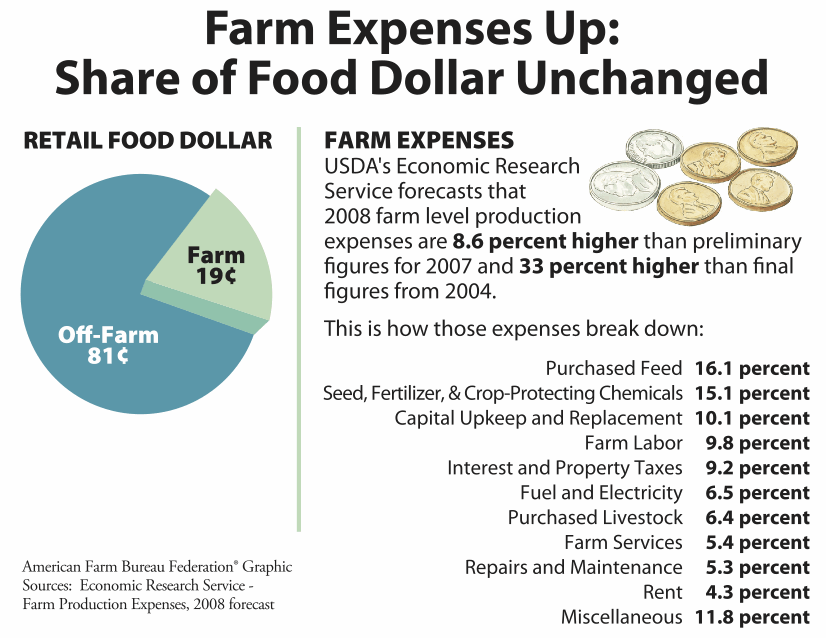Blog
Your Food Dollar and the Farmer’s Cut
By Kevin Rogers, Arizona Farm Bureau President

My wife, Janel, does the grocery shopping for our family of five. She’s asking why her food budget dollars don’t go as far as they did just a year ago.
The Arizona Farm Bureau has been doing a market basket survey every quarter for nearly three years. Our survey of three different grocery stores sampling the same 16 products each time shows food costs have risen nearly 6 percent in the last year. So you and Janel are not imagining higher prices; it’s reality.
Higher energy costs, including gasoline, diesel and natural gas, are the dominant force driving higher food costs. You recognize this every time you stop at the station to fill up. Like you, I’m spending much more to fill the family vehicle’s gas tank.
Every farm product that leaves my farm gate and ends on your dinner plate takes energy to produce and distribute. It takes natural gas to produce the fertilizer I use. It takes diesel and gasoline to produce the crop and transport it from my farm to the market. It takes energy to process and package and then transport to distribution centers. And finally it takes fuel to get the finished product to your grocery shelf.
In 2008 during the most recent and dramatic rise in food prices, world food costs rose 43 percent in a twelve-month period, well above our rate here in the U.S. Back then, it was partly blamed on ethanol. But, only three percent of that 43 percent rise was directly attributable to U.S. production of ethanol. Back then, despite record corn prices due to increased world demand, the value of the corn in an 18-ounce box of corn flakes was still only 8.5 cents. That’s about the price in a box of corn flakes today.
According to the USDA, on average, the farmer’s share of your food dollar is 19 cents (see graphic above). That 19 cents is covering increased costs associated with fuel and other production expenses. My fertilizer costs are well above normal averages and fuel continues to be noticeably higher than in recent memory.
Higher prices for food worldwide go beyond higher commodity prices. Droughts in Australia and other countries can impact supplies of grain and beef. Plus, standards of living, particularly in India and China, are increasing and global demand for better more varied diets. When demand goes up, but commodity supplies remain tight, for example with wheat and soybeans, you’ll see price spikes on food items.
Agriculture is not a high-profit business. It’s an industry that does not determine the price it receives for its products (exception being farmers’ markets and other direct markets where a farmer can set his price). Global market demands and global supplies drive the price farmers and ranchers receive. It’s to your benefit for U.S. agriculture to stay competitive in the world market. If we lose our competitive edge, we’ll become dependent upon other countries for food as we currently do oil.
But agriculture is a business we love. It’s part of why Janel and I are in agriculture. Despite tight margins, serious labor shortages and the risks associated with non-competitive costs potentially forcing us to export agriculture production to other countries, we keep trying.
Janel is reminded of this every time she does the grocery shopping for our family.
















